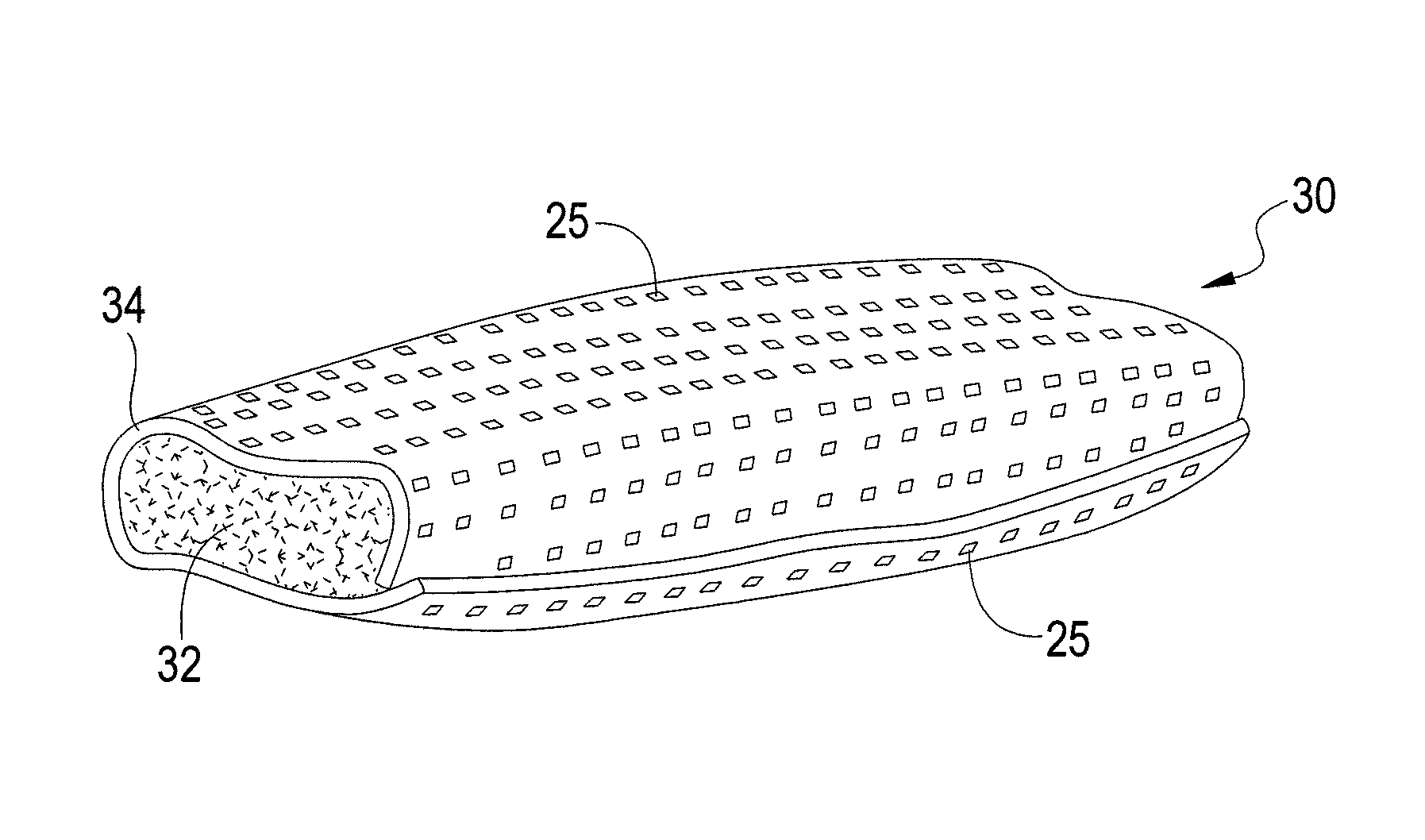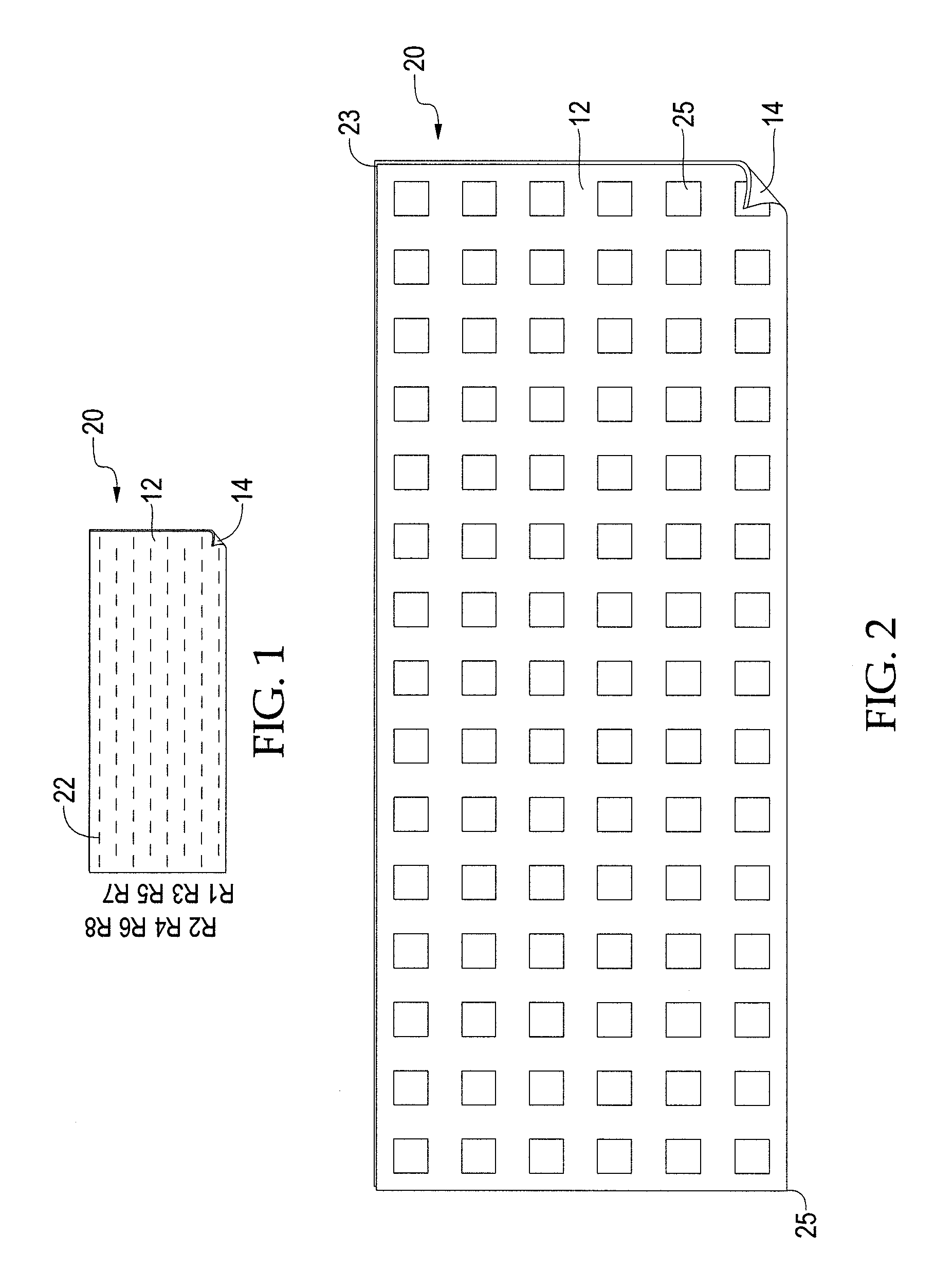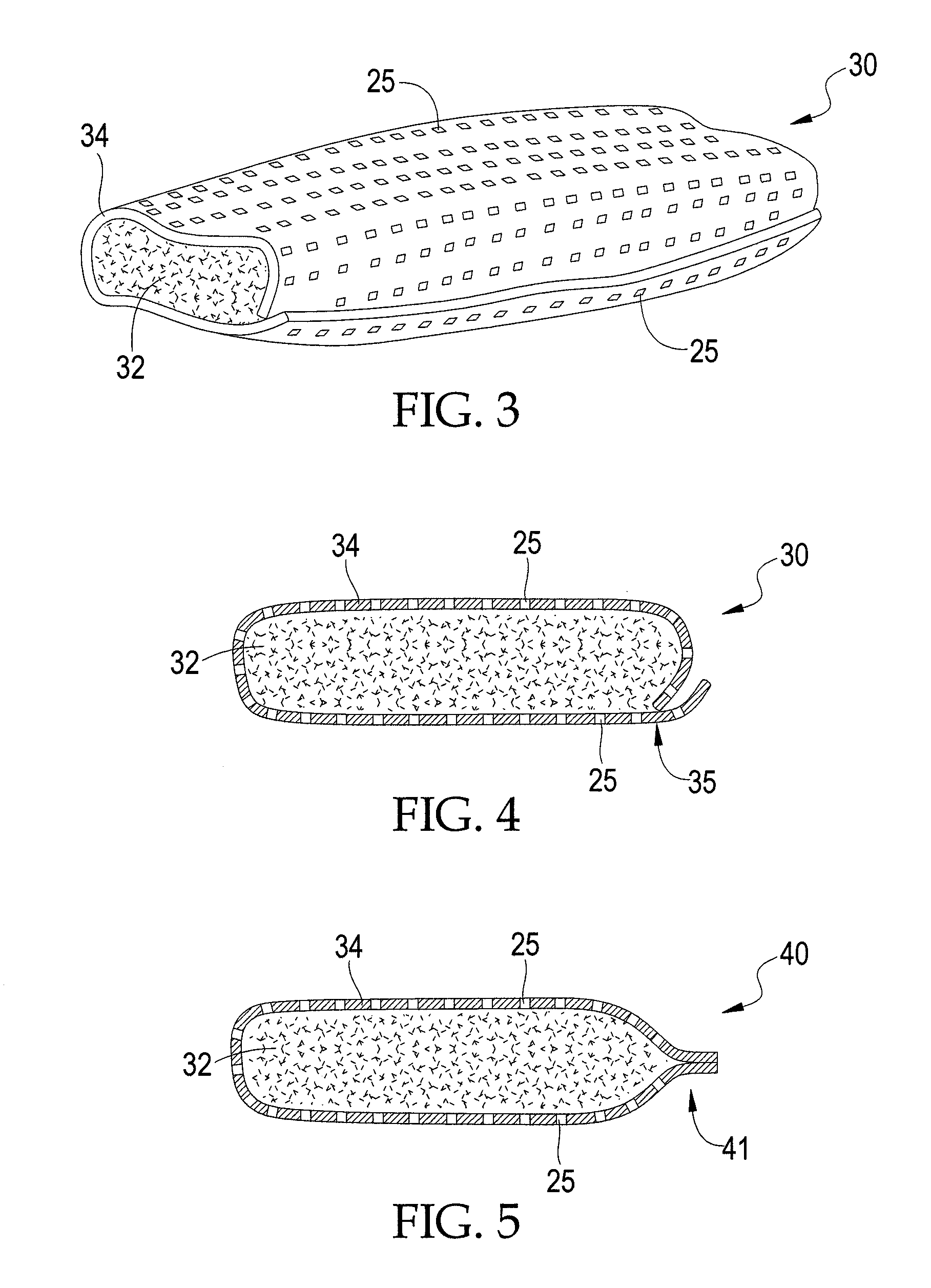Osteoconductive implants and methods of using same
a technology of conductive implants and implants, applied in the field can solve the problems of fusion methods relying on muscle tension or other inadequate means of maintaining, and achieve the effect of promoting bone growth
- Summary
- Abstract
- Description
- Claims
- Application Information
AI Technical Summary
Benefits of technology
Problems solved by technology
Method used
Image
Examples
Embodiment Construction
[0023]The present invention is directed to osteoconductive implants that include an osteoconductive material having a surface covered at least in part by a placental membrane sheet. The osteoconductive material can be provided as a particulate material, including either powder form, or larger particulate materials such as granules or chips. The particulate osteoconductive material is effective in providing a scaffold for bone growth. The osteoconductive material may for example be bone, especially cortical bone or cancellous bone. The osteoconductive material may also be a synthetic bone substitute, many formulations of which are well known in the art. The implants include a sufficient amount of osteoconductive material to provide a scaffold effective to remain in the patient for a period of time adequate for the formation of osteoid in the void for which bone growth is desired. To further promote bone growth, growth factors or other bone growth promoting proteins may be added to th...
PUM
| Property | Measurement | Unit |
|---|---|---|
| length | aaaaa | aaaaa |
| thickness | aaaaa | aaaaa |
| width | aaaaa | aaaaa |
Abstract
Description
Claims
Application Information
 Login to view more
Login to view more - R&D Engineer
- R&D Manager
- IP Professional
- Industry Leading Data Capabilities
- Powerful AI technology
- Patent DNA Extraction
Browse by: Latest US Patents, China's latest patents, Technical Efficacy Thesaurus, Application Domain, Technology Topic.
© 2024 PatSnap. All rights reserved.Legal|Privacy policy|Modern Slavery Act Transparency Statement|Sitemap



